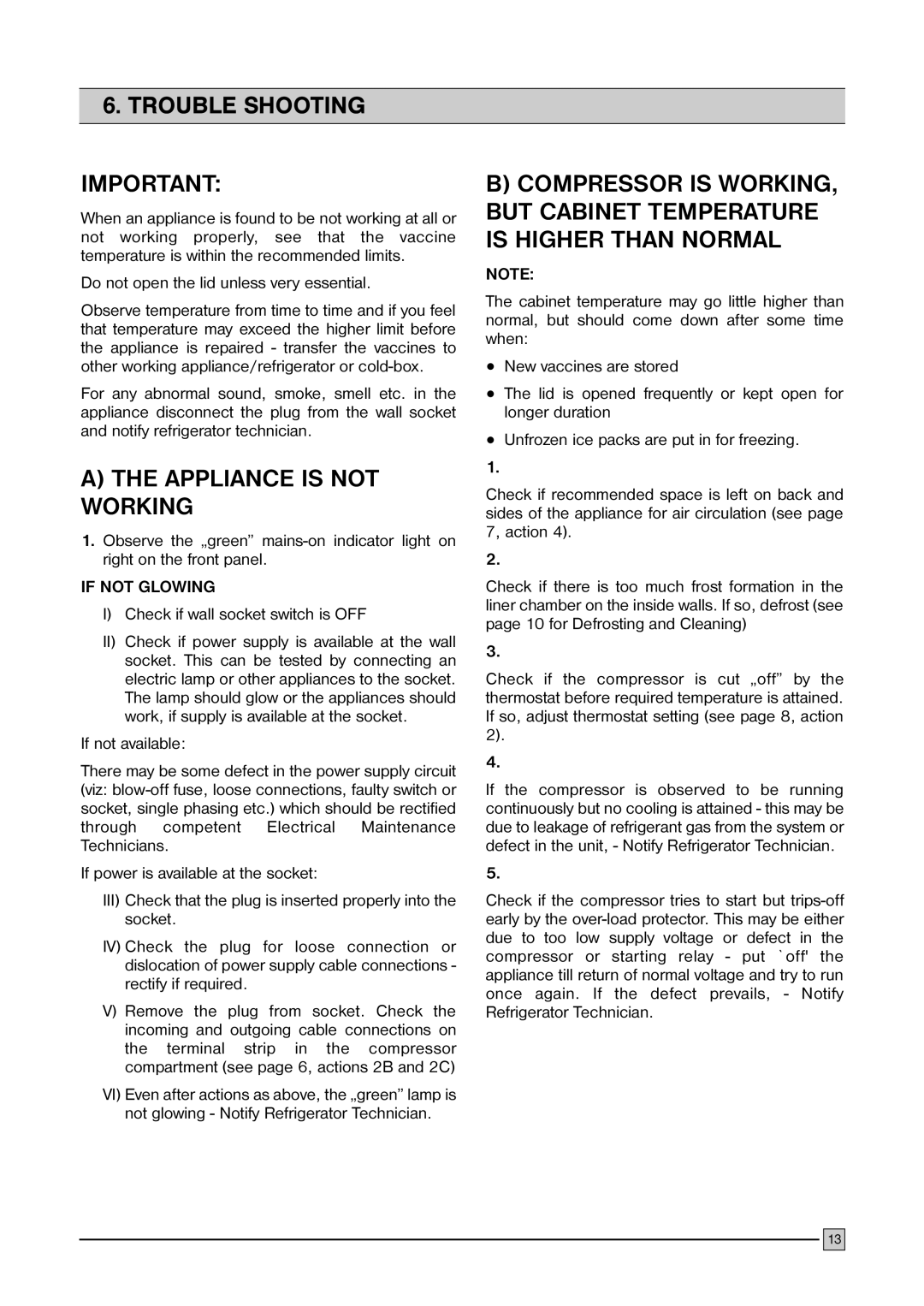
6. TROUBLE SHOOTING
IMPORTANT:
When an appliance is found to be not working at all or not working properly, see that the vaccine temperature is within the recommended limits.
Do not open the lid unless very essential.
Observe temperature from time to time and if you feel that temperature may exceed the higher limit before the appliance is repaired - transfer the vaccines to other working appliance/refrigerator or
For any abnormal sound, smoke, smell etc. in the appliance disconnect the plug from the wall socket and notify refrigerator technician.
A)THE APPLIANCE IS NOT WORKING
1.Observe the „green”
IF NOT GLOWING
I) Check if wall socket switch is OFF
II)Check if power supply is available at the wall socket. This can be tested by connecting an electric lamp or other appliances to the socket. The lamp should glow or the appliances should work, if supply is available at the socket.
If not available:
There may be some defect in the power supply circuit (viz:
If power is available at the socket:
III)Check that the plug is inserted properly into the socket.
IV) Check the plug for loose connection or dislocation of power supply cable connections - rectify if required.
V)Remove the plug from socket. Check the incoming and outgoing cable connections on the terminal strip in the compressor compartment (see page 6, actions 2B and 2C)
VI) Even after actions as above, the „green” lamp is not glowing - Notify Refrigerator Technician.
B)COMPRESSOR IS WORKING, BUT CABINET TEMPERATURE IS HIGHER THAN NORMAL
NOTE:
The cabinet temperature may go little higher than normal, but should come down after some time when:
New vaccines are stored
The lid is opened frequently or kept open for longer duration
Unfrozen ice packs are put in for freezing.
1.
Check if recommended space is left on back and sides of the appliance for air circulation (see page 7, action 4).
2.
Check if there is too much frost formation in the liner chamber on the inside walls. If so, defrost (see page 10 for Defrosting and Cleaning)
3.
Check if the compressor is cut „off” by the thermostat before required temperature is attained. If so, adjust thermostat setting (see page 8, action 2).
4.
If the compressor is observed to be running continuously but no cooling is attained - this may be due to leakage of refrigerant gas from the system or defect in the unit, - Notify Refrigerator Technician.
5.
Check if the compressor tries to start but
13
